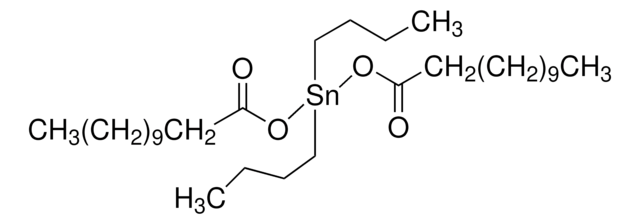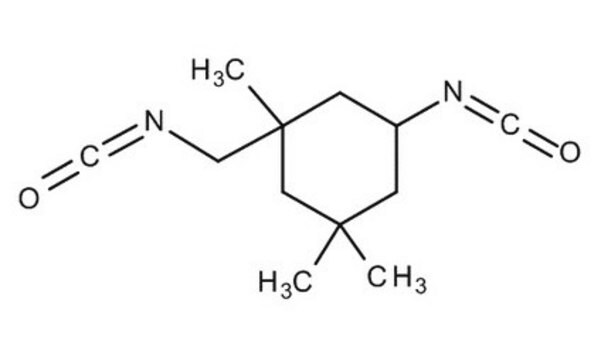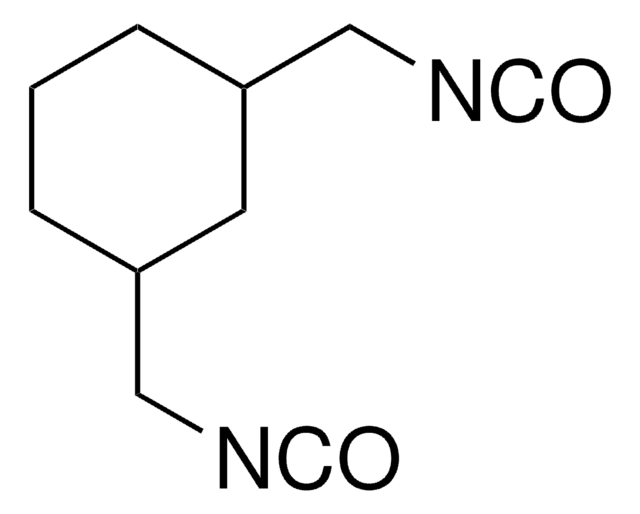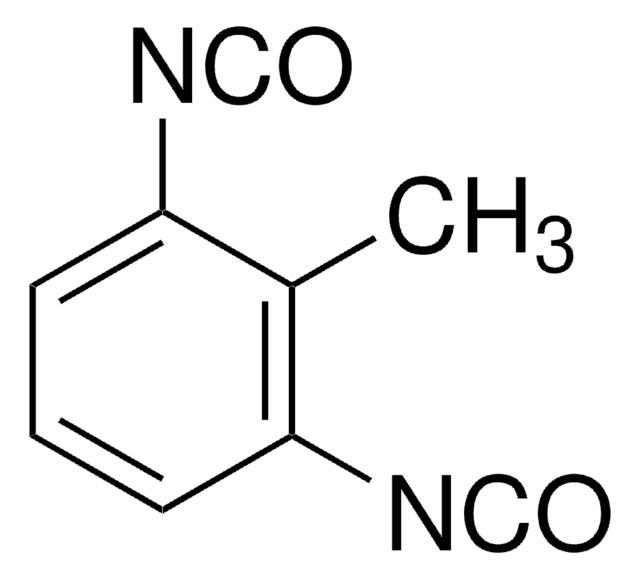Kluczowe dokumenty
317624
Isophorone diisocyanate
98%, mixture of isomers
Synonim(y):
5-Isocyanato-1-(isocyanatomethyl)-1,3,3-trimethylcyclohexane
About This Item
Polecane produkty
Poziom jakości
Próba
98%
Postać
liquid
współczynnik refrakcji
n20/D 1.484 (lit.)
tw
158-159 °C/15 mmHg (lit.)
gęstość
1.049 g/mL at 25 °C (lit.)
ciąg SMILES
CC1(C)CC(CC(C)(CN=C=O)C1)N=C=O
InChI
1S/C12H18N2O2/c1-11(2)4-10(14-9-16)5-12(3,6-11)7-13-8-15/h10H,4-7H2,1-3H3
Klucz InChI
NIMLQBUJDJZYEJ-UHFFFAOYSA-N
Szukasz podobnych produktów? Odwiedź Przewodnik dotyczący porównywania produktów
Opis ogólny
Zastosowanie
- Production of polyurethane coatings for automotive and industrial applications.
- Synthesis of polyurethane elastomers used in medical devices and sports equipment.
- Production of polyurethane foams used in upholstery, insulation, and packaging applications.
- Use in the manufacture of adhesives, sealants, and binders.
- In the synthesis of bridged silsesquioxane(BSQ) by sol-gel polycondensation with 3-aminopropyltriethoxysilane. The polymer of BSQ can be used to prepare the moisture-resistant film for UV filters.
- As a healing agent in the preparation of polyurethane microcapsules by interfacial polymerization.
- As a monomer in the synthesis of highly monodispersed polyurea microspheres via precipitation polymerization.
Hasło ostrzegawcze
Danger
Zwroty wskazujące rodzaj zagrożenia
Zwroty wskazujące środki ostrożności
Klasyfikacja zagrożeń
Acute Tox. 1 Inhalation - Aquatic Chronic 2 - Eye Irrit. 2 - Resp. Sens. 1 - Skin Irrit. 2 - Skin Sens. 1 - STOT SE 3
Organy docelowe
Respiratory system
Kod klasy składowania
6.1A - Combustible acute toxic Cat. 1 and 2 / very toxic hazardous materials
Klasa zagrożenia wodnego (WGK)
WGK 2
Temperatura zapłonu (°F)
325.4 °F - closed cup
Temperatura zapłonu (°C)
163 °C - closed cup
Środki ochrony indywidualnej
Eyeshields, Faceshields, Gloves, type ABEK (EN14387) respirator filter
Wybierz jedną z najnowszych wersji:
Masz już ten produkt?
Dokumenty związane z niedawno zakupionymi produktami zostały zamieszczone w Bibliotece dokumentów.
Klienci oglądali również te produkty
Protokoły
HPLC Analysis of Isocyanates on Titan™ C18
Nasz zespół naukowców ma doświadczenie we wszystkich obszarach badań, w tym w naukach przyrodniczych, materiałoznawstwie, syntezie chemicznej, chromatografii, analityce i wielu innych dziedzinach.
Skontaktuj się z zespołem ds. pomocy technicznej












